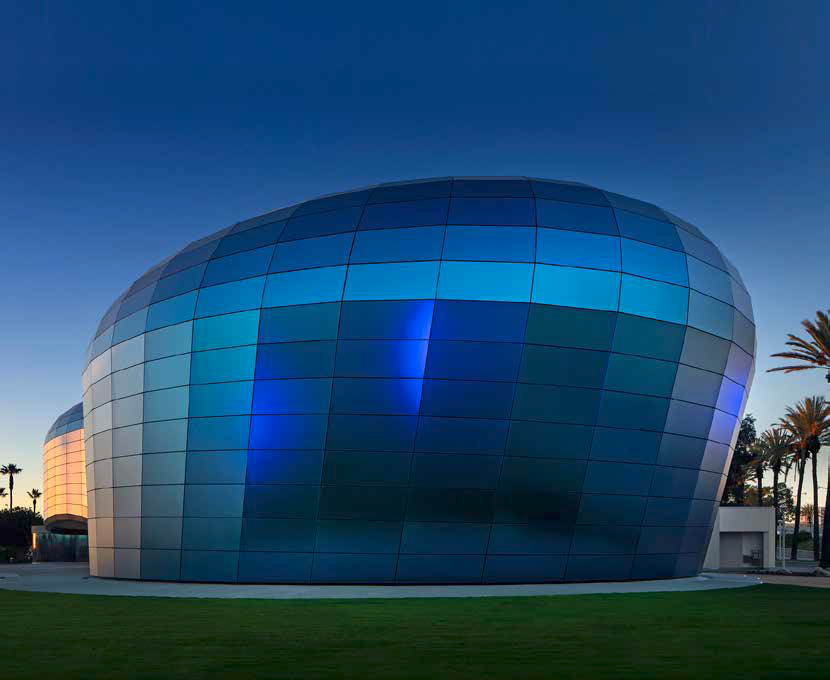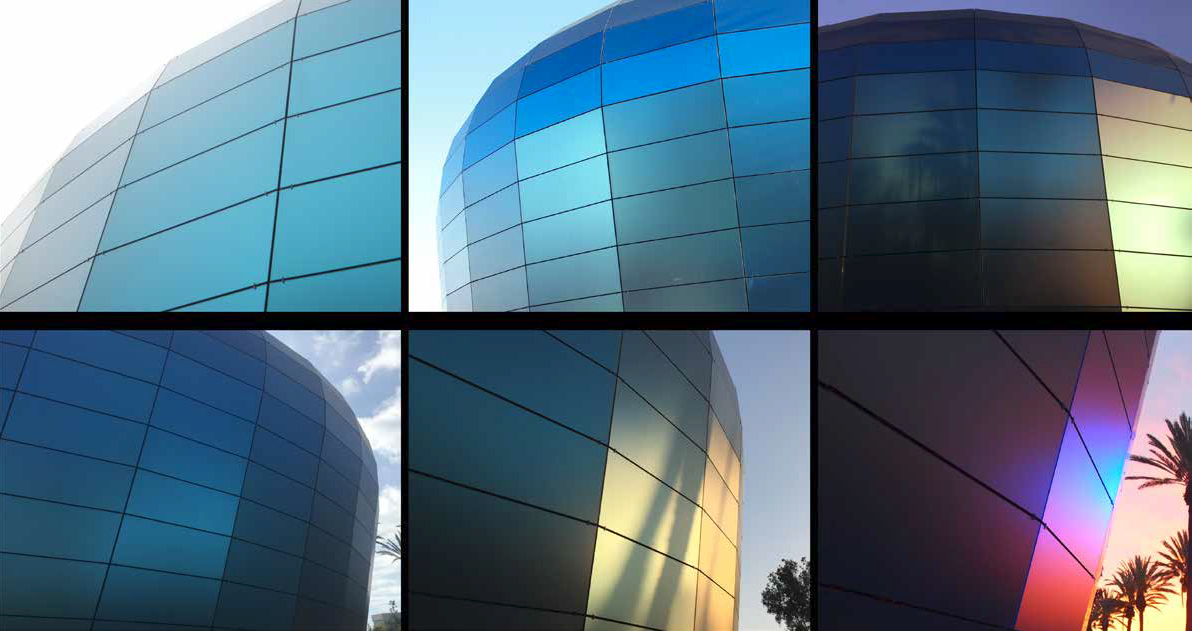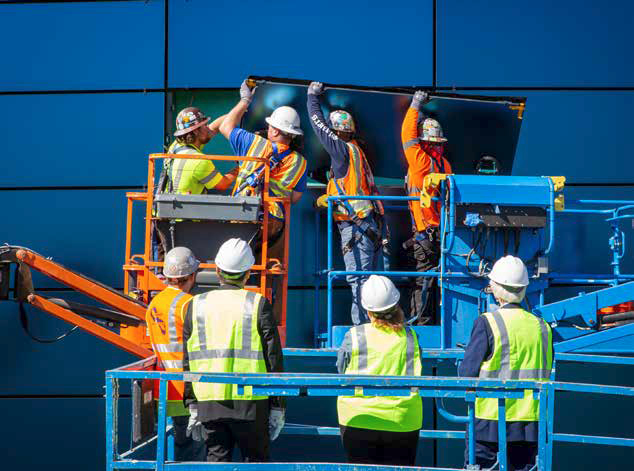先进中间层解决方案部门 项目 Aquarium of the Pacific
ADVANCED INTERLAYER SOLUTIONS



The 29,000 ft2 (2,694 m2), two-story sustainable structure − designed by San Francisco-based architecture and design firm EHDD − is fully enveloped by the 18,000 ft2 (1,672 m2) glass façade. Although only one shade of blue tint has been used throughout all the panels, the different angles and the way each panel catches the light, creates a fascinating abstract effect, with dramatic night-time lighting ensuring that this effect is also visible even after dark.
Katherine Miller, senior associate at EHDD explains: “The biomorphic form of the overall structure is meant to encourage different interpretations, referencing both microscopic and monumental sea creatures. The glass surface is meant to evoke the ocean. Early in the design process we established that the surface should have three characteristics: depth, variability, and luminosity. Because the structure is primarily a theatre, we could not allow any light to enter through the façade. Early on we considered opaque materials such as aluminium, stainless steel or FRP panels, but these surfaces did not have the liveliness we were after.”
The structure’s façade, which also doubles as a ventilated rain screen, is constructed of 839 non-reflective glass panels, each of which is uniquely sized and shaped to accommodate the sweeping curves of the building’s form. The individual panels are fabricated from 6 mm (0.23 in) acid etched, heat-strengthened glass + 1.52 mm (60 mil) SentryGlas® + blue tinted heat-strengthened glass + 1.52 mm SentryGlas® + 6 mm tempered and heat-soaked glass coated with a ceramic opacifier on surface 6.
Miller elaborates: “The innermost layer of glass incorporates a mirror coating to create luminosity and variability. The mirror coating subtly reflects the sky and the surrounding environment, resulting in slight colour shifts between the panels. Due to the colour variability, most people are surprised to learn that all of the glass is of identical make-up. The blue ocean colour was achieved with a blue body-tinted middle layer of glass. The outer layer is low iron-glass with acid-etch on the #1 surface to soften the reflectivity of the innermost glass layer. We used low-iron glass in lieu of conventional clear glass in order to not dilute the blue of the middle layer. The outermost low-iron glass layer was critical for creating a ¼ in separation between the blue colour and the acid-etch at the outer-most surface. In combination with the mirror coating, this creates depth.”
Applications
Region
Interlayer
Architect
Laminator
Glazing Contractor
Engineer








Keep up with the very latest news in laminated glass innovations and procedures by subscribing to our free Laminated Glass News.
Subscribe here